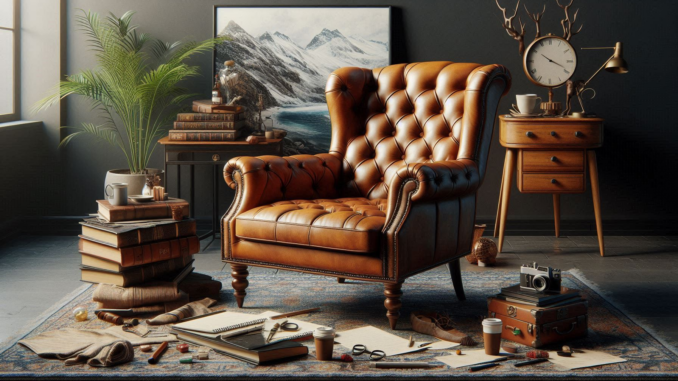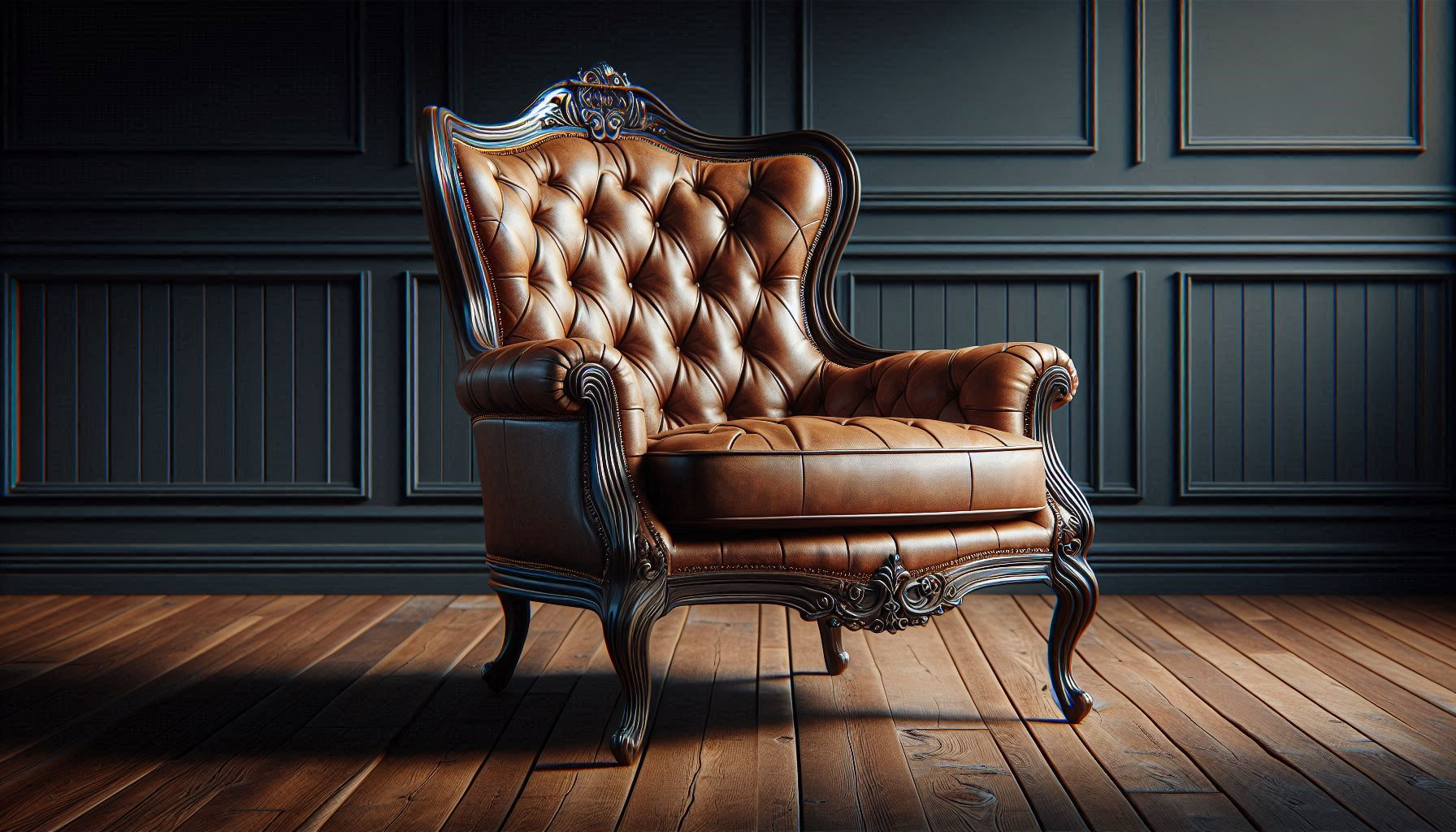
How to Recover a Leather Chair
Is your beloved leather chair looking worn out? Don’t toss it just yet! With a little effort and the right know-how, you can breathe new life into that old favorite. This guide will walk you through the process of recovering a leather chair, step by step. Whether you’re aiming to update its look or fix some damage, we’ve got you covered.
Quick Answer
To recover a leather chair, you’ll need to remove the old upholstery, cut new leather pieces using the old ones as templates, attach new padding if needed, staple the new leather in place, and reassemble the chair. The process typically takes 4-6 hours for beginners.
A Tale of Transformation
Before we dive in, let me share a quick story. Last summer, my grandma gave me her old leather armchair. It was comfy, but boy, was it beat up! The leather was cracked and faded, and one of the arms had a big tear. I almost gave up and bought a new chair, but then I thought, “Why not try to fix it up?” So I rolled up my sleeves and got to work. The result? A chair that looks brand new and a skill I never knew I had. Trust me, if I can do it, so can you!
What You’ll Need
Before you start, gather these materials and tools:
- New leather or upholstery fabric
- Leather glue
- Staple gun and staples
- Sharp scissors
- Screwdriver
- Chalk or fabric pencil
- Foam padding (optional)
- Leather conditioner
- Pliers
- Measuring tape
Getting Started: Check Your Chair
First things first, take a good look at your chair. Is it just the leather that needs work, or are there other issues? Wiggle it around – are the joints loose? Any squeaks? Make a list of everything that needs fixing. This step helps you plan your work and avoid surprises later.
Step-by-Step Guide

1. Take It Apart
Start by unscrewing any removable parts. Usually, the seat comes off easily. Take pictures as you go – they’ll help when you’re putting everything back together. Use your pliers to pull out all the staples holding the old leather in place. Be careful not to damage the frame underneath.
2. Make Your Pattern
Here’s a neat trick: use the old leather pieces as patterns for cutting your new leather. Lay them out on your new leather and trace around them with chalk. But here’s the key – cut your new pieces a bit bigger. It’s always easier to trim off extra than to start over because you cut too small!
3. Pad It Up
If your chair’s padding is flat or lumpy, now’s the time to replace it. You can buy foam at most craft stores. Cut it to fit and glue it in place. Good padding makes a big difference in how comfy your chair will be.
4. Time to Wrap
This is where the real transformation happens! Start with the seat. Place your new leather over the padding and pull it tight. Staple it in place, working from the center out to the edges. For the back and arms, start at the top and work your way down. The trick is to keep the leather smooth and tight as you go.
5. Dealing with Curves
Curves can be tricky. If you’re struggling with wrinkles around curved areas, try making small cuts in the edge of the leather. This helps it bend around curves without bunching up. Just be careful not to cut too far – you don’t want these cuts to show on the finished chair.
6. Put It All Back Together
Once all the new leather is in place, it’s time to reassemble your chair. Remember those pictures you took earlier? They’ll come in handy now. Make sure all screws are tight and everything feels sturdy.
Finishing Touches
You’re almost done! Here are some final steps to make your chair look its best:
- Trim excess leather: Use sharp scissors to carefully cut away any extra leather hanging over the edges.
- Condition the leather: Apply a good leather conditioner to keep your new upholstery soft and supple.
- Touch up the color: If needed, use a leather dye to even out any color differences.
Tips for Success
- Take your time. Rushing leads to mistakes.
- Keep your work area clean to avoid staining the new leather.
- If you’re not sure about a step, look up a video online. Seeing someone else do it can be super helpful.
- Save any leftover leather – it might come in handy for future repairs.
Common Challenges and Solutions
Wrinkles Won’t Smooth Out?
Try using a hair dryer on low heat to gently warm the leather. This can make it more pliable and easier to smooth out.
Staples Not Holding?
Make sure you’re using the right size staples for your staple gun. If the wood is very hard, you might need to pre-drill tiny holes.
Color Doesn’t Match?
Leather dye can help even out color differences. Just be sure to test it on a small, hidden area first.
Caring for Your Newly Recovered Chair
Now that you’ve put all this work into your chair, you’ll want it to last. Here are some tips:
- Clean spills right away to prevent staining.
- Use a leather conditioner every few months to keep the leather soft.
- Avoid putting your chair in direct sunlight, which can fade and dry out the leather.
- Consider using a leather protector spray for extra defense against spills and wear.
Is It Worth the Effort?
You might be wondering if all this work is really worth it. In my experience, absolutely! Here’s why:
- Cost savings: Recovering a chair is usually much cheaper than buying a new one.
- Quality: Older chairs often have better bones than new, cheap furniture.
- Customization: You get to pick exactly the color and texture you want.
- Satisfaction: There’s nothing like sitting in a chair you fixed up yourself!
When to Call a Pro
While recovering a chair is a great DIY project, sometimes it’s best to call in an expert. Consider professional help if:
- The chair has complex shapes or patterns you’re not comfortable tackling.
- There’s significant structural damage to the frame.
- You’re working with a valuable antique and worried about decreasing its value.
Wrapping Up
Recovering a leather chair might seem daunting at first, but it’s a rewarding project that can save you money and give you a sense of accomplishment. With patience and care, you can transform an old, worn-out chair into a beautiful piece that looks brand new. Remember, every expert was once a beginner, so don’t be afraid to give it a try!
What’s Next?
Now that you’ve mastered chair recovery, why stop there? This skill can open up a whole world of furniture restoration. Maybe you have an old couch that could use some love, or a set of dining chairs that need a fresh look. The possibilities are endless!
Have you recovered a leather chair before? How did it go? Share your experiences in the comments below – we’d love to hear your tips and tricks!


Leave a Reply